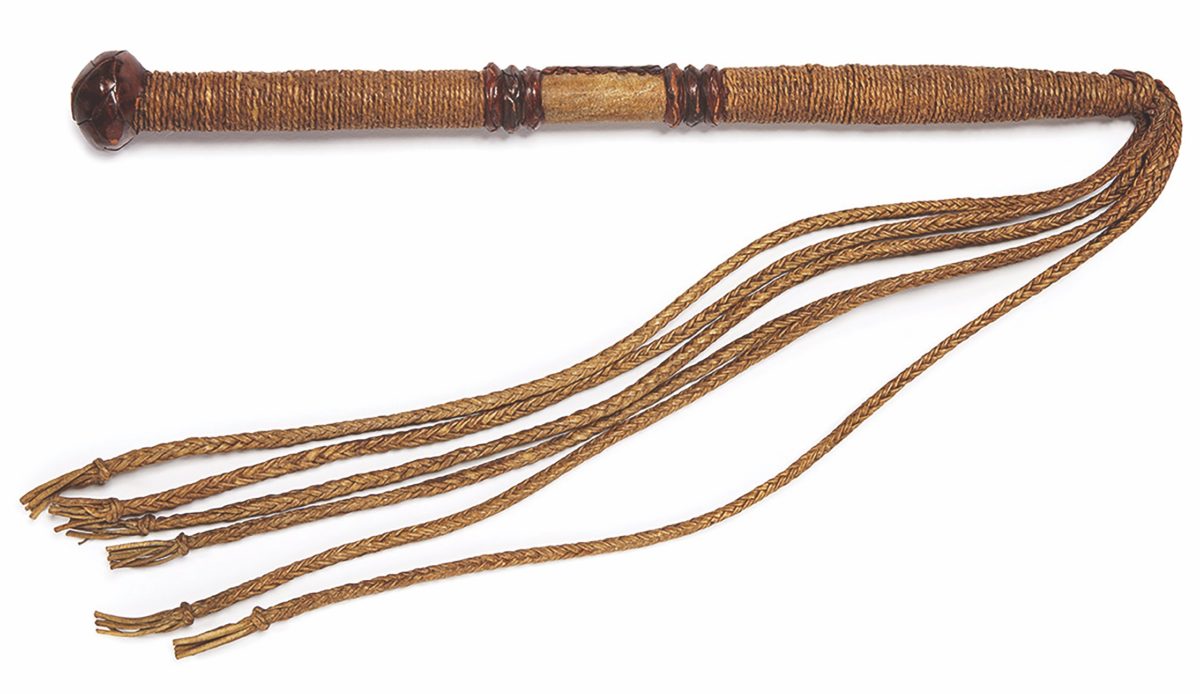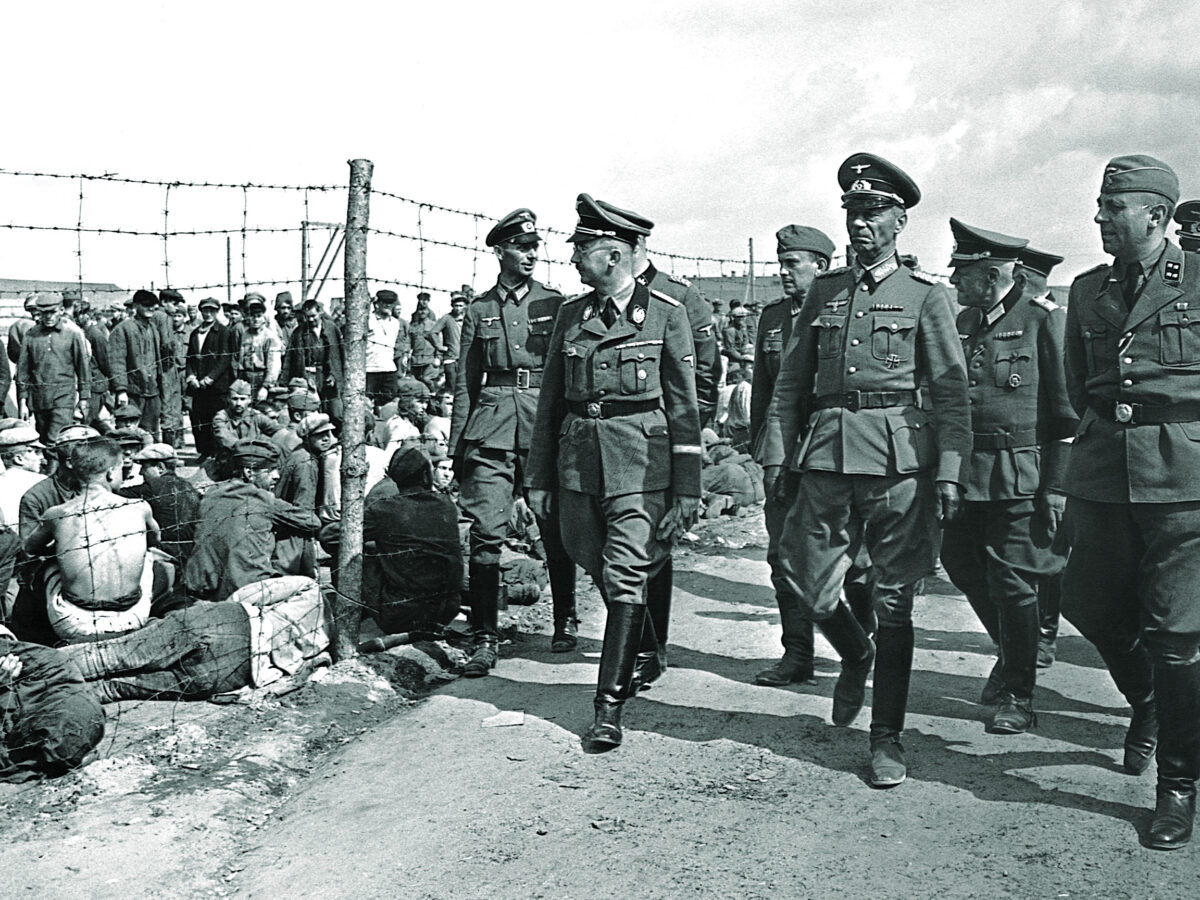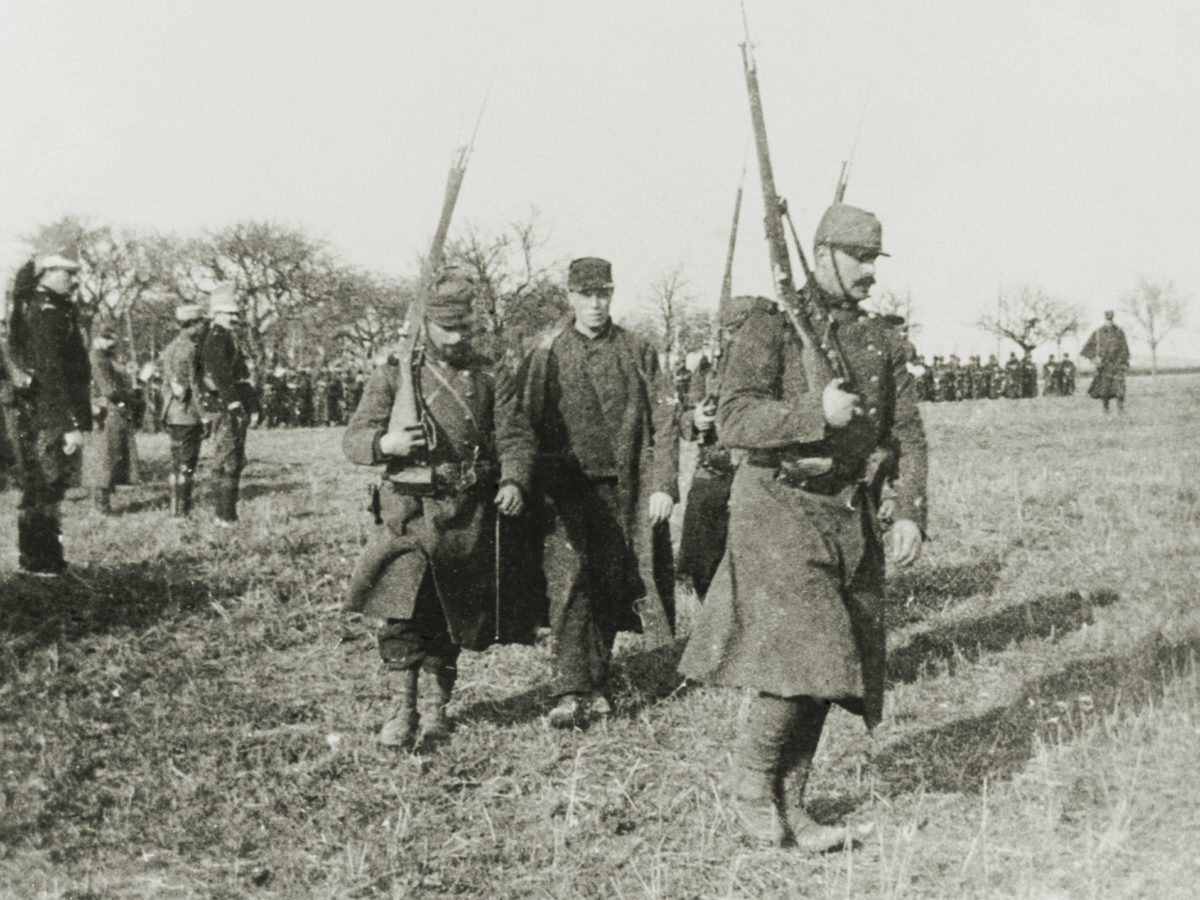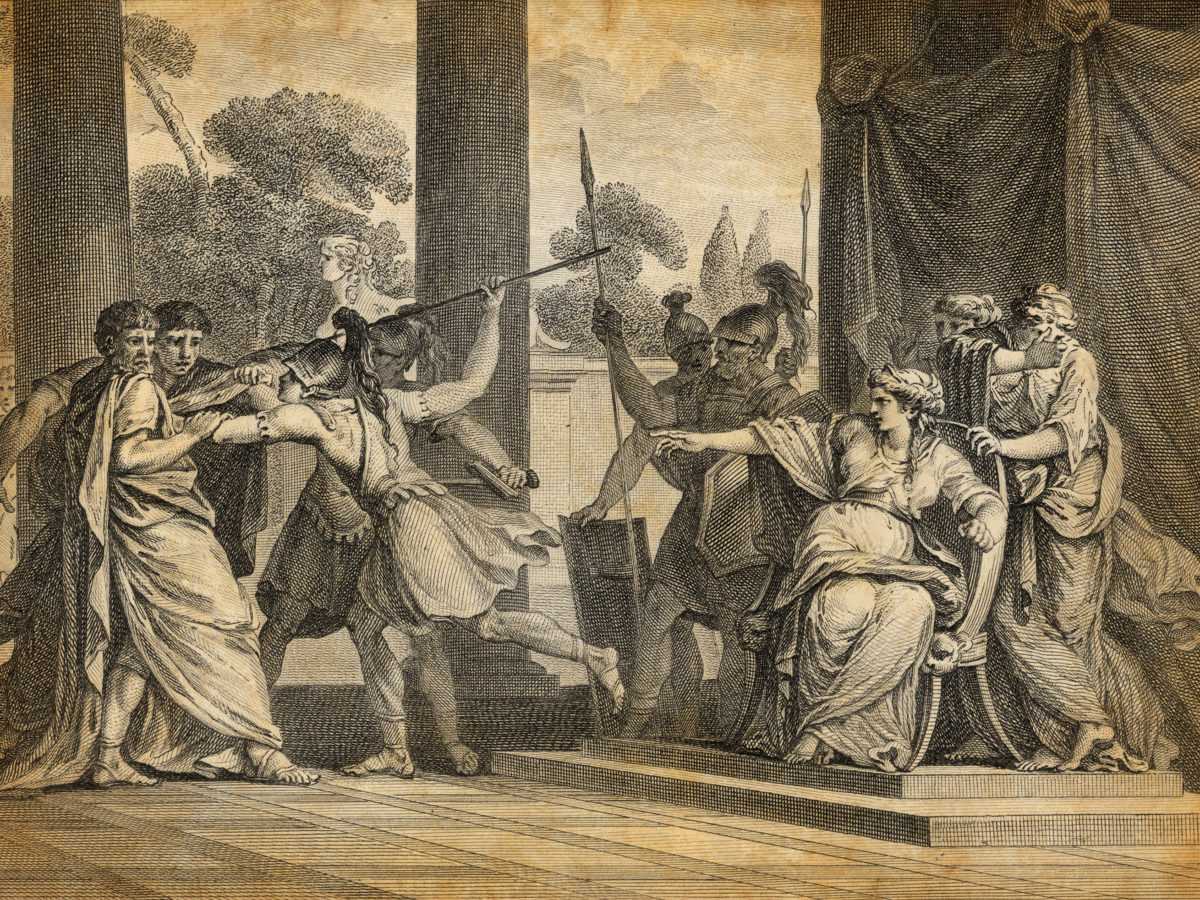The British Army of the early 19th century had a well-earned reputation for deplorable conditions of service and excessively harsh discipline; to a lesser degree, the same could also be said of the U.S. Army in the same period. Reforms in military law—and more importantly, changes in national attitudes toward matters of military discipline and punishment—occurred along similar lines on both sides of the Atlantic.
Describing the culture of military discipline that existed in the U.S. Army during the frontier era, historian Don Rickey has said, “Fear of punishment was the basis of discipline.” This was true of all armies throughout history, just as it has been a factor in human behavior in most civilian societies and cultures. Fear of the punitive and punishing hand of the law, after all, was supposed to hold the criminal element in check, particularly when that punishment was known to be swift, sure, and severe. How well this deterrent worked in practice was always debatable, but for centuries the prevailing belief in militaries the world over insisted that military discipline could only be maintained by the heavy-handed application of harsh punishments.
The British soldier at the beginning of this period was subject to a code of military law that was, in a word, brutal. In 1800, British Army regulations listed no fewer than 222 offenses that could draw the death penalty, and corporal punishment in the form of flogging was taken to such an extreme that sentences of as many as 500 lashes were regularly ordered. That number of lashes was enough to kill a man, a fact which led several contemporaneous observers to question the ultimate intent of such punishment. Even in an era when flogging was firmly established in military law, there were always critics who deplored it as barbaric.
GET HISTORY’S GREATEST TALES—RIGHT IN YOUR INBOX
Subscribe to our Historynet Now! newsletter for the best of the past, delivered every Wednesday.
How much the individual British soldier was at risk of a flogging depended to some degree on his own conduct, of course, but the infliction of this punishment could be incredibly capricious. Some British officers were benevolent disciplinarians who resorted to the lash only when the severity of the offense or the immutability of military law required them to do so, but others were infamous for their proclivity for flogging men on almost any pretext. Major General Robert “Black Bob” Craufurd, the tactically brilliant but notoriously mercurial commander of the British army’s Rifles Brigade in the early years of the Peninsular War, was a ferociously strict officer who threatened to flog any man in his brigade who stepped out of the line of march in order to avoid a mud puddle in the road. Coming from a man of Craufurd’s reputation, it was no idle threat. His nickname originated from his moodiness rather than his physical appearance, but it might just as accurately have been applied to his draconian views on military discipline.
The enlisted men in armies on both sides of the Atlantic endured decades of passive neglect and outright condemnation from their civil societies, and the same sort of negative stereotypes were applied to British and American soldiers alike. The Duke of Wellington’s frequently-quoted remark that the soldiers of his army were the “scum of the earth” might have been more a judgment on the shortcomings of the British recruiting system than on the individual qualities of the British soldier, but it has usually been interpreted as a comment on his solders’ predilection for drink and disorder.
Recommended for you
The French army of the Napoleonic Wars, on the other hand, relied on nationwide conscription and so at least theoretically brought men of better character into the ranks since it drew men from all walks of life. That was a stereotype, and as such it was no more accurate than was the British opinion that only the most dissolute and desperate men in their society would ever accept the King’s shilling and enlist voluntarily.
The British public celebrated their soldiers when they won victories on the battlefield but reviled them as reprobates and criminals the rest of the time. This attitude persisted for decades, and Wellington himself expressed it on occasion. In 1829 he wrote, “The man who enlists into the British army is, in general, the most drunken and probably the worst man… of the village or town in which he lives… they can be brought to be fit for what is to be called the first class only by discipline.” This belief that most soldiers were utterly deficient in moral character was accompanied by the view that the only way to keep them in check was by harsh discipline enforced by savage forms of corporal punishment.
British commanders down to the company level had authority to sentence soldiers to brutal punishments for the most trivial of offenses. The returns of one regiment in 1811 were not at all unique in the penalties its officers imposed for minor transgressions. The trivial infractions soldiers committed, and the punishments imposed, included: “Deficient of frill, part of his regimental necessaries.”—100 lashes; Deficient of a razor, part of his regimental necessaries.—200 lashes; for making an improper use of the barrack bedding.—400 lashes.”
In the U.S. Army flogging was also a standard punishment at the outset of the 1800s, for a wide range of offenses. When the United States encoded its first version of the Articles of War in 1806, flogging was applied to no less than 30 offenses. The British applied the lash with even greater frequency to many more violations of military regulation, and the rigidly conservative senior ranks of both armies regarded the lash as indispensable to maintaining good order and discipline. As one historian notes, “Traditionalists tended to look on private soldiers as incorrigible reprobates who required stiff doses of punishment to keep their animal instincts in check.”
Reform came slowly in both nations, and changes in military justice reflected changes occurring at the same time in civilian law and societal attitudes toward crime and punishment. The growing civilian repugnance for the spectacle of soldiers tied to the halberds for floggings in view of their assembled regiment arguably had more to do with progressive attitudes about the inhumanity of the punishment itself than with any real concern for the rights of the soldiers themselves, at least at first. The activists who protested against the savagery of military punishments did not express nearly as much indignation about the wretched conditions of soldiers’ lives, even though the two issues were inextricably linked. By 1850, public pressure in the United States had forced a drastic reduction in the number of military offenses for which the lash could be imposed, but the army managed to avoid an outright abolition of flogging by keeping it as an optional punishment under intentionally vague and ambiguously worded regulations.
For British soldiers, the wide degree of interpretation applied to charges such as “insubordination” meant that they were always at risk of severe punishment for minor offenses—almost any action or behavior could be interpreted as insubordination if their officers chose to interpret it as such. In 1849, one soldier was punished on a charge of insubordination for “wearing new trousers outside the barrack gates while drunk.” The charge of “disgraceful conduct” was even more ambiguous, so much so that in that same year the government felt it necessary to warn the army that “the indiscriminate use of the term tends to weaken its moral effect.” Even so, the overuse of the lash as punishment for violating hopelessly vague and ambiguous rules continued. The problem was not as severe in the U.S. army at that time, but American court-martial records from the period show that soldiers were flogged for offenses such as “making a disrespectful gesture to the adjutant,” and “loss of a bridle.”
In both Britain and the United States, the incremental shift away from military flogging happened at nearly the same time—during the Napoleonic Wars in Britain, and after the War of 1812 in America. Humanitarian concerns were only part of the objections raised. Most critics focused on the fact that flogging simply did not seem an effective deterrent to misbehavior. “I have closely watched the career of many of the recipients of this degrading punishment,” one former British soldier wrote, “and I can safely say that I never knew not even one that it made any improvement in, either his moral character or as a soldier.” Over a career of 21 years in the ranks, this soldier estimated that he had witnessed at least 100 floggings, so he held a very well-informed opinion.
The U.S. Army from its creation in 1775 used flogging as a punishment, though with less frequency and certainly for fewer offenses that did other armies of the same era. The lash remained an option of military justice in the American army up until the Civil War, when it was finally stricken from army regulations in 1861. Until then, the offense for which it was most commonly applied was the crime of desertion, and it was usually applied as one of a series of punishments that often included branding with the letter “D.” Branding remained a legal punishment in the U.S. Army until it was replaced by the practice of “indelible marking” or tattooing of the shameful letter, and was finally abolished completely in 1870.
In time, the shift in civilian and military attitudes toward corporal punishment was reflected in increasingly creative alternatives to the old standby of flogging. By the time of the American Civil War, soldiers in the U.S. Army incurred such punishments as being made to stand on a barrel in the middle of camp, carrying a heavy log under guard, or riding a wooden sawhorse while holding an enormous wooden sabre, all of which relied more on discomfiture and public humiliation than physical abuse. A British soldier of that era might be made to wear his uniform inside out, stand at the position of attention with his face to a wall while wearing full marching kit, or report in different uniform configurations for inspection every hour throughout the duty day. That last punishment continues to be used by noncommissioned officers in both armies to this day. One Victorian-era British officer was noted for
his inventive punishment for drunkenness. Rather than making a formal entry on a soldier’s charge sheet and consigning the miscreant to the guardhouse for regimental correction, he ordered him confined to the post hospital on a course of emetics, a purgative that induced uncontrollable vomiting, then docked his pay for the costs of the medicine and the laundering of the bed sheets.
This sort of creative innovation on the part of the commanding officer allowed more lenient, progressive-minded officers to exercise their individual discretion. At the same time, however, it also allowed excessive punishment to take root outside the scope of military regulations. One Scottish soldier who was serving in his regiment’s officers mess was sentenced to 48 hours of solitary confinement, to have his hair shaved, five days of marching drill,
14 days of confinement to his barracks, and forfeiture of two days’ pay. His offense was that he had been slow to provide the senior officer of the mess with a bottle of soda water when it was demanded.
Even as the harshest forms of discipline slowly gave way to progressive reforms, however, the inconsistent application of military punishments was recognized as an enduring problem. “I think,” one senior British officer wrote in the midst of the debate over proposed changes to military justice, “a greater discretionary power would only produce petty tyrants, who will torment the soldiers into desertion and drinking… he is merely a zealous fool, hot after unimportant minutiae.” Policymakers in the American military expressed the same concern, and that issue continues to the present day. Commanders’ personalities and their views about how discipline should be enforced are constant variables that have made soldiers’ lives difficult in all armies throughout history and probably always will, despite reams of military regulations that try to eliminate those factors from the process of maintaining good order and discipline in the ranks.
John A. Haymond is the author of Soldiers: A Global History of the Fighting Man, 1800–1945 (Stackpole Books, 2018) and The Infamous Dakota War Trials of 1862: Revenge, Military Law, and the Judgment of History (McFarland, 2016).









